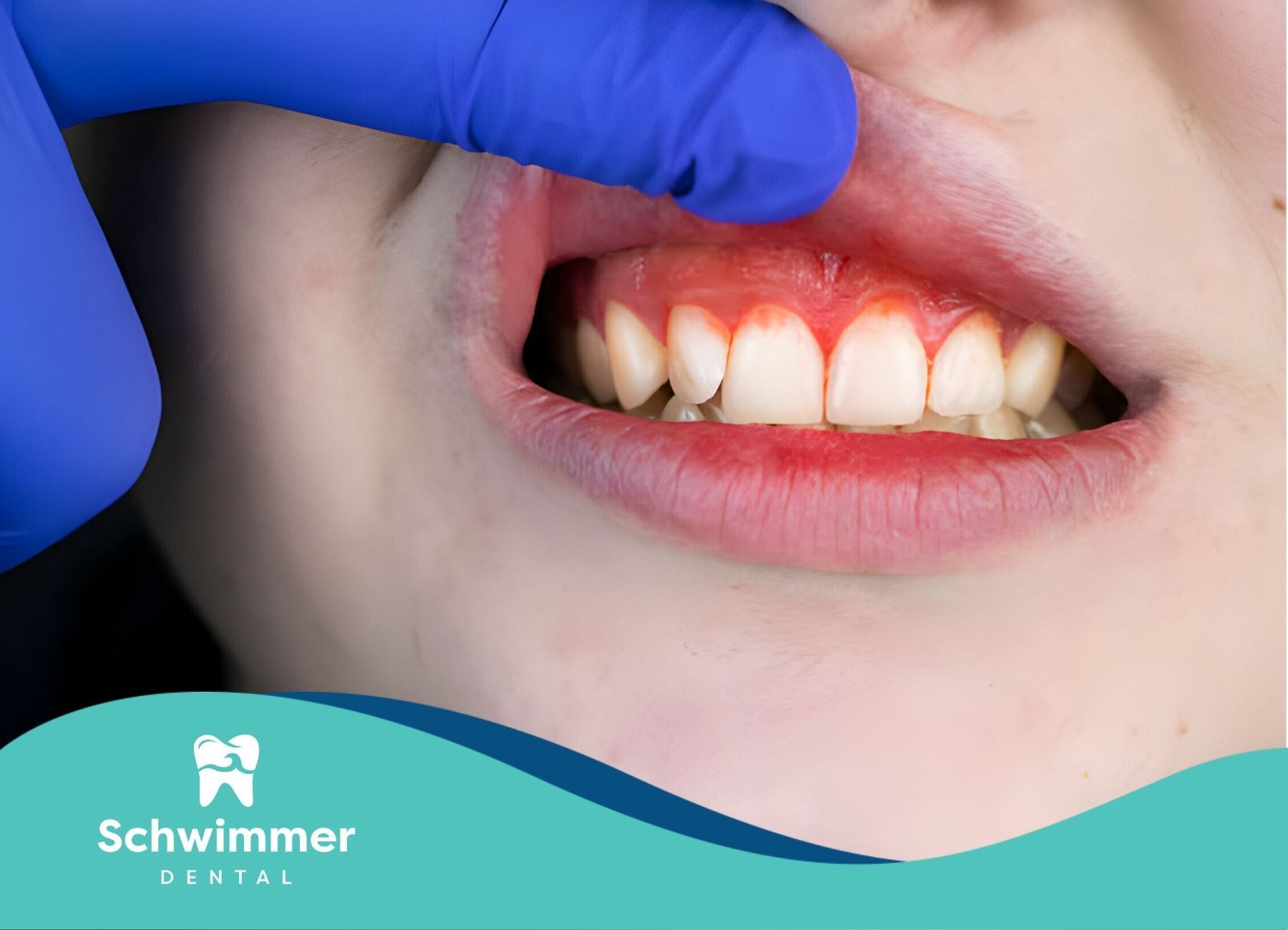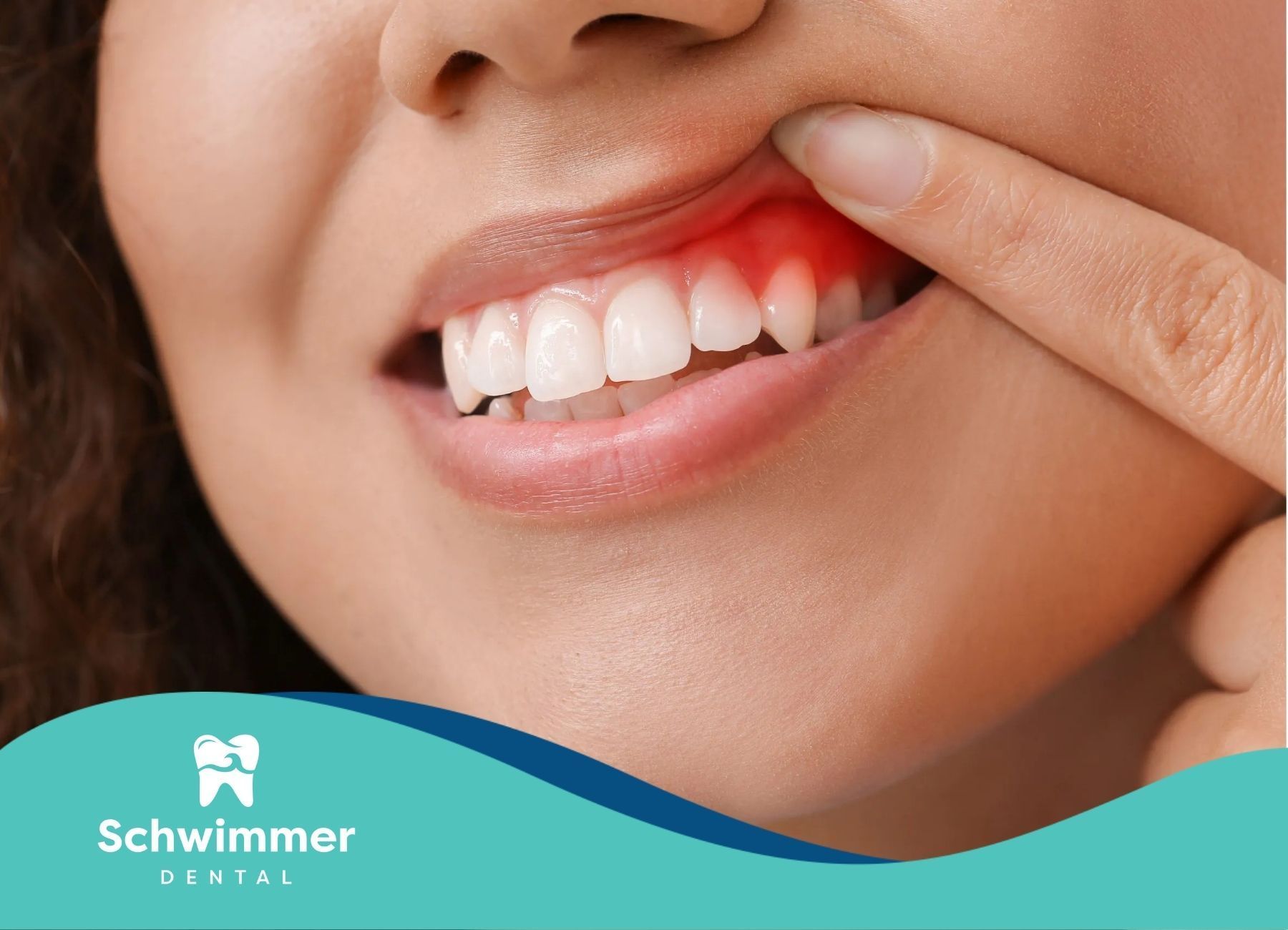Have an appointment? Complete the Intake Form
Is It Normal to Have Buck or Bunny Teeth?
Ever noticed how some smiles instantly remind people of a bunny? Those two front teeth, sticking out just a bit more than the rest, have a way of stealing the spotlight. Whether it’s a kid beaming at a playground or an adult chuckling at an old nickname, bunny teeth have been turning heads—and sparking questions—forever.
So, what’s the deal? Are they normal, quirky, or something to fix? Our team at Schwimmer Dental has created this guide to unpack everything there is to know about bunny teeth, from science to style.
What are Bunny Teeth?
"Bunny teeth" is a playful term for a dental feature where the two upper front teeth (incisors) appear larger, longer, or more prominent than the surrounding teeth.
Often, this comes with an overbite—where the upper teeth overlap the lower ones more than usual. While the phrase conjures images of cute rabbits, it’s not a medical diagnosis; it’s simply a nickname for a natural variation in tooth alignment or size.
Dentists classify bunny teeth under broader terms like malocclusion (misaligned bite) or protrusion (teeth sticking out). Statistically, overbites affect up to 70% of children to some degree, according to the American Association of Orthodontists, though only a fraction are noticeable enough to earn the "bunny" label. For some, it’s a fleeting phase; for others, it’s a lifelong trait.
Is It Normal to Have Buck Teeth?
The short answer? Yes, it’s entirely normal. Teeth come in all shapes and sizes, influenced by genetics, growth patterns, and even habits. Prominent front teeth are just one of countless variations—like having a gap, crooked canines, or a slightly tilted smile.
Here’s why bunny teeth are more common than people might think:
Genetic Factors
If a parent or grandparent has an overbite or larger incisors, chances are their kids might inherit the trait. Studies show that jaw size and tooth alignment are heavily tied to DNA, making bunny teeth a family affair for many.
Childhood Development
Kids often sport bunny teeth as their baby teeth give way to permanent ones. Those oversized incisors can look exaggerated until the jaw grows to match. For most, this balances out by adolescence, but not always.
Habits That Shape Smiles
Thumb-sucking, prolonged pacifier use, or tongue-thrusting (pushing the tongue against the teeth) can nudge incisors outward. These habits, common in early childhood, sometimes leave a lasting mark.
In short, bunny teeth are a natural part of human diversity. They’re not a flaw—they’re just a feature, like freckles or curly hair.
When Do Bunny Teeth Become a Concern?
While bunny teeth are normal, there are times when they signal something worth checking. Here’s how to tell the difference:
Functional Issues
If protruding teeth make chewing difficult, cause speech problems (like a lisp), or lead to frequent lip-biting, a dentist might recommend intervention. Severe overbites can also strain the jaw over time.
Dental Health Risks
Teeth that stick out are more exposed to injury—think a fall or a rogue soccer ball. They can also wear unevenly or crowd other teeth, raising the risk of decay or gum issues.
Emotional Impact
For some, bunny teeth spark insecurity. Studies from the Journal of Orthodontics suggest that perceived dental imperfections can affect self-esteem, especially in teens. If the look bothers someone enough, cosmetic options might be worth exploring.
A quick chat with a dentist can clarify whether bunny teeth are just a quirk or something to address.
Treatment Options for Bunny Teeth
Not everyone with bunny teeth needs or wants treatment, but for those who do, modern dentistry offers plenty of solutions. Here’s a rundown:
Braces
The classic fix. Braces gradually shift teeth into alignment, correcting overbites and spacing. Treatment typically takes 1-3 years, depending on severity.
Clear Aligners
Think Invisalign—discreet, removable trays that nudge teeth into place. Ideal for mild to moderate cases, they’re popular with adults who want a low-profile option.
Veneers
For a faster cosmetic fix, veneers (thin porcelain shells) can cover prominent teeth, reshaping their appearance without moving them. It’s less invasive but doesn’t fix bite issues.
Tooth Reshaping
In rare cases, a dentist might file down slightly oversized incisors for a subtler look. This is quick but only works for minor tweaks.
Surgery
For extreme overbites tied to jaw misalignment, orthognathic surgery might be an option. It’s rare and reserved for cases where function is seriously impaired.
Costs vary widely—braces might run $3,000-$7,000, while aligners or veneers can hit similar ranges. Consulting a dental professional helps weigh the pros, cons, and price tags.
Conclusion
Bunny teeth—those standout front incisors—tell a story of natural variation, shaped by genetics, growth, and sometimes a thumb-sucking phase. For many, they’re a charming quirk that fades with time or stays as a signature feature. For others, they’re a prompt to explore braces, aligners, or veneers, whether for function or confidence.
Either way, bunny teeth are far from abnormal—they’re a common thread in the tapestry of human smiles, celebrated in some cultures and subtly tweaked in others. Armed with this guide, anyone can decide if their bunny teeth are a trait to love or adjust.
The journey to understanding bunny teeth doesn’t end here. For personalized advice or a closer look at treatment options, Schwimmer Dental offers expert care with a friendly touch. Their team specializes in everything from orthodontics to cosmetic fixes, helping patients hop toward a smile they adore.
Ready to explore what’s possible? Schedule a consultation with Schwimmer Dental today—because every smile deserves to shine, bunny teeth or not!
FAQs
Are buck teeth rare?
Not at all. Mild overbites or prominent incisors affect a huge chunk of the population. They only stand out when exaggerated.
Do bunny teeth go away on their own?
In kids, they often do as the jaw grows. For adults, they’re usually here to stay unless treated.
Can buck teeth cause problems?
Sometimes. Speech issues, chewing trouble, or injury risk can crop up, but many people live with them problem-free.
Need Assistance? We’re Here to Help
We are dedicated to enhancing your dental health and well-being.
We provide personalized dental care solutions for a confident, healthy smile.
Contact us today for Professional Dental Care.

Our caring staff will help you feel relaxed and comfortable in our state of the art office. We respect your time and pledge to deliver prompt service, backed by the latest knowledge, techniques, and technology.
Email: Office@schwimmerdental.com
Tel: (848) 294-2385
Fax: (732) 899-3347
Address: 1115 Arnold Ave,
Point Pleasant, NJ, 08742
Schwimmer Dental – Website by CWS


